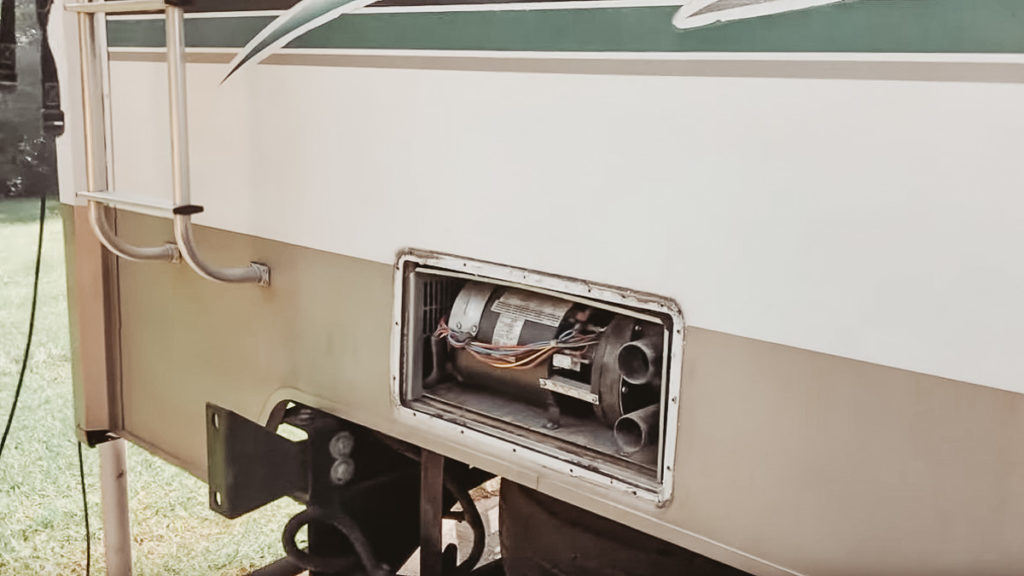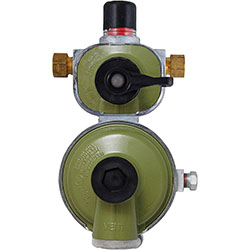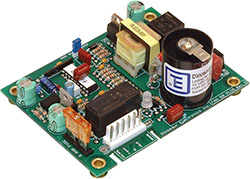The reasons why your RV furnace won’t stay on is because your battery bank is running low, or you have low propane pressure, or just a bad control board. There could be other reasons, but these are the three most common reasons. This article applies only to situations where the furnace kicks on, appears to run for a short while, then shuts off.

Why Won’t My RV Furnace Stay On?
Low Battery Voltage is a Big Reason Why
Low voltage from the battery bank is the biggest reason why your RV’s furnace won’t stay on. If your rig has always stayed at an RV Park, then you’ve never had to worry about recharging your battery. But what happens when you don’t have park power to rely on?
12 volt DC current is needed to run the fan inside the furnace. This current comes from your RV’s battery bank. The furnace fan requires a lot of amps to blow heated air through an RV’s duct work. Most RV manufacturers install only one battery in their rigs, which is the bare minimum needed to run the 12 volt DC circuit. As long as your RV remains at an RV park, the shore power kept your battery bank charged. However, most RV manufacturers don’t design their units for boondocking. If your RV is not hooked up to shore power, your furnace can drain a single battery down in two to three hours.
Your RV should have an automatic low voltage cutoff switch that senses when battery voltage drops to about 12.2 to 12.0 volts. (A full battery should push amps at about 13.5 to 14.0 volts.) When that cutoff switch activates, all battery power in your RV shuts off, including the furnace. Your RV should also have a manual switch that allows you to turn battery power back on (usually called a 12 volt switch, or DC power switch).
If you turned battery power back on by hitting the 12 volt switch, you will still get adequate lighting from your ceiling lights, and your furnace may actually attempt to restart. You will hear its fan kick back on, and may even ignite and blow heated air. However, the automatic low voltage switch will cut off once again, usually in about 30 to 60 minutes. That cutoff switch will continue to shut off battery power to remind you that your batteries are too low.
The solution is to add more batteries. Most RVs come from the factory with just a single 100 amp hour battery. You should have a minimum of 200 amp hours if you want to run the furnace for 8 hours. Read, “How Much Battery Power for Boondocking Do I Need?“
Furnace Igniter Is Not Working
Furnace igniters often go bad. However, most cases of bad igniters usually result from careless handling by the RV manufacturer. Once you install a replacement igniter, that igniter will usually last you for years. You’ll have to find out what brand and model your furnace is, and then search for that on Amazon to find the right igniter.
Low battery voltage is also a big reason why an igniter is not working. Most RV furnaces use a direct spark igniter that produces a stream of clicking sparks until the furnace ignites. This igniter needs battery power. Your furnace will still sound as if its working even though it can’t ignite. The fan will still run and blow room-temperature air. However, if it can’t produce an adequate spark, the furnace will eventually shut off.
Low Propane Pressure
This is not the same as an empty propane tank.
This is where you have plenty of propane, but the pressure is too low to ignite the furnace. Low pressure is caused by either having too many other appliances running, or a dirty propane regulator, or the outdoor temperature being too cold. Usually, it’s all three combined.
Cold, winter temperatures will cause propane pressure to decrease. Once outdoor temperature reaches -44 degrees F, you lose all propane pressure completely. But, freezing temperature alone is rarely the culprit.
If you are also using a propane water heater, or running your refrigerator on propane, or using a propane cook top, having one or all of these appliances running at the same time, pressure can drop significantly.

MEGR-253HP
Also, a dirty propane regulator will impede the flow of propane gas to your RV. This is more common than you may think. The propane regulator connects two propane tanks together, regulates the pressure to a constant rate, and delivers it to your RV. RV manufacturers always install the cheapest (Chinese-made) regulators they can find. These things get fouled up easily. We recommend getting regulators built by Marshall Excelsior, they’re the only ones still made in the USA, and are designed to deliver higher pressure in colder weather or when you have more appliances running…
- Marshall Excelsior MEGR-253HP Regulator (see it on Amazon).
Bad Control Board
The furnace has an electronic circuitry board that controls a variety of functions, including knowing when to shut off the furnace, and knowing when to relight the furnace. These days, furnace manufacturers don’t build their own boards. They outsource them to shops in China, and as a result end up with very cheaply-made boards. Just the constant rattling and bouncing of an RV rolling down the road can screw up these boards. It’s common for a bad board to shut-off and turn-on a furnace erratically.

Fan 50 Plus
Board
The solution is to buy a better board. They’re pretty much just plug-n-play. Dinosaur Electronics makes the best circuitry boards for RV appliances. They make one called, “Fan 50 Plus” which works on all RV furnaces…
- Dinosaur Electronics, Fan 50 Plus Board (see it on Amazon).


The burner can be burn up the lighter that lights the burner if burner gets to hot and causes it to get to close to lighter on your board there is a light that will fash now if the fan want come on and for a few second then you have a sail switch bad located on inside of cover that switch turns fan on run it till any fumes inside is gone then it signal gas value and lighter to light but like I said before if burner is bad it will cause lighter and gas value to not work hope this gives you some thing to check I no the burner was my problem
The sail switch is a safety device that ensures proper airflow. If it’s stuck or not functioning correctly, it can prevent the furnace from igniting.
Diagnosing a non-igniting Suburban RV furnace can be tricky due to its many components.